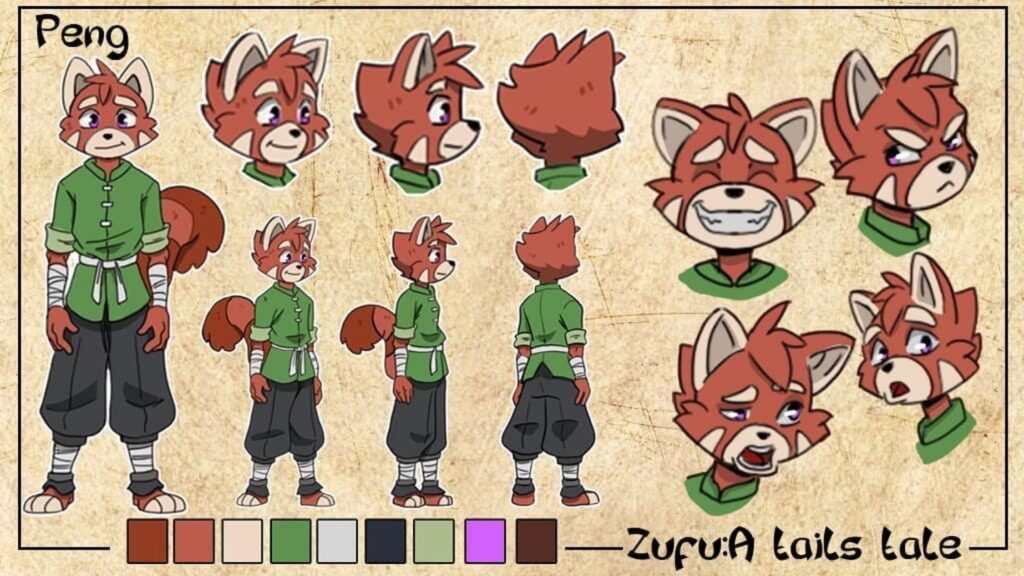Game Design
Character design is a critical aspect of 2D animation and game design. It is the process of creating unique and memorable characters that can connect with the audience and drive the story forward. A well-designed character can make a game or animation more engaging and immersive, while a poorly designed character can ruin the experience. In this blog post, we will explore the basics of character design, the different types of characters, the role of personality and aesthetic in character design, and the impact of technology on character design.
The Basics of Character Design
Creating a character involves several key elements, including the character’s appearance, personality, backstory, and role in the story. A character’s appearance includes their physical features, clothing, accessories, and overall style. Personality refers to the character’s traits, behaviors, and emotions. The backstory explains the character’s history, motivations, and goals. The role in the story describes how the character contributes to the plot and interacts with other characters.
For beginners, it’s essential to start with a clear idea of the character’s appearance and personality. Sketching different designs and exploring different styles can help to find the right look for the character. It’s also helpful to create a backstory and role in the story to give the character depth and purpose. As the character evolves, it’s essential to refine their appearance and personality to ensure consistency and coherence.

Types of Characters
There are several types of characters in 2D animation and game design, each with unique design considerations. The hero is the main character, often the protagonist, and typically has a strong and appealing design. The villain is the antagonist, often with an intimidating or sinister appearance. The sidekick is the supporting character, often with a distinctive appearance and personality that complements the hero. The anti-hero is a complex character that challenges traditional hero archetypes and often has a flawed or ambiguous personality.
When designing a hero, it’s essential to create a design that is both visually appealing and embodies the character’s strengths and weaknesses. For villains, it’s crucial to create a design that is intimidating and evokes fear in the audience. Sidekicks should have a distinctive appearance that complements the hero and provides contrast. Anti-heroes should have a unique personality that challenges traditional hero archetypes and creates a sense of complexity and depth.
The Role of Personality and Aesthetic
Personality and aesthetic are critical elements of character design. Personality refers to the character’s traits, behaviors, and emotions. Aesthetic refers to the character’s appearance, including color schemes, shapes, and textures. A character’s personality and aesthetic should be consistent and complementary, creating a cohesive and memorable design.
To create a unique and memorable personality, it’s essential to consider the character’s backstory, motivations, and goals. A character’s personality should be consistent with their backstory and role in the story. Aesthetic choices should also reflect the character’s personality, such as using bold colors for a confident character or muted colors for a reserved character.

Aesthetic choices also play a crucial role in character design. The right color scheme, shapes, and textures can create a distinctive and memorable design. Color schemes should complement the character’s personality and role in the story. Shapes should reflect the character’s physical features and personality. Textures can add depth and dimension to the character’s appearance.
Examples of Successful Character Designs
Several successful character designs have become iconic in 2D animation and game design. For example, Mario from the Super Mario Bros. franchise has a simple but memorable design that embodies his heroic and adventurous personality. The Joker from the Batman franchise has a sinister and chaotic design that reflects his villainous personality. Pikachu from the Pokemon franchise has a cute and playful design that complements his friendly and loyal personality.
The Impact of Technology
Technology has had a significant impact on character design in 2D animation and game design. New tools, techniques, and software have made it easier to create complex and detailed characters. 3D animation software has also made it possible to create 2D characters with depth and dimension.
However, technology also presents new challenges for character design. The increased realism of 3D animation can make it difficult to create memorable and distinctive designs. It’s essential to balance technological advancements with the fundamental principles of character design, such as personality and aesthetic.
Conclusion
Character design is a critical aspect of 2D animation and game design. A well-designed character can make a game or animation more engaging and immersive, while a poorly designed character can ruin the experience. By considering the basics of character design, the different types of characters, the role of personality and aesthetic, and the impact of technology, designers can create memorable and effective characters. Remember to keep the character’s backstory, motivations, and role in the story in mind, and use color schemes, shapes, and textures to create a cohesive and distinctive design. Contact us today to learn how Creative Overdose Studios can bring your characters to life!

